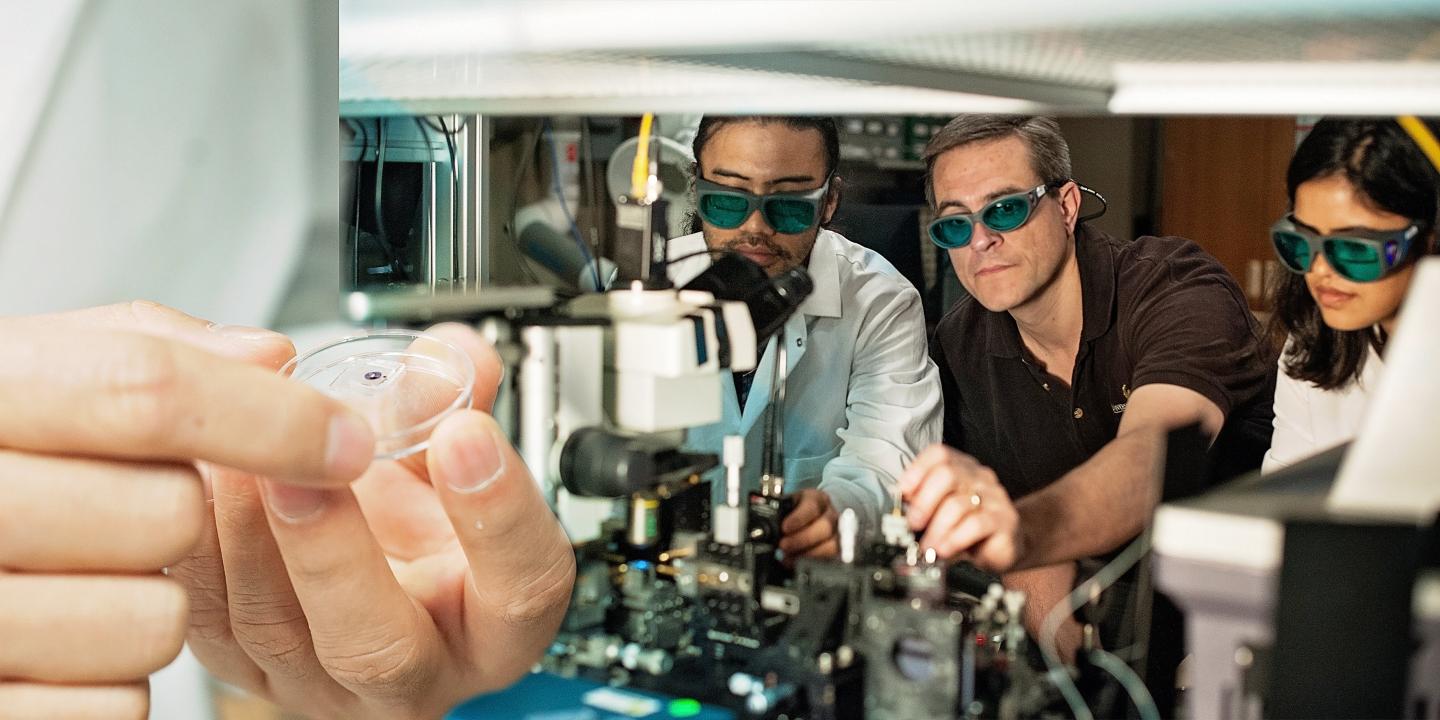
New Method to Control Light Boosts Future Computing Speed

UCF's team works in the lab.
Credit: UCF
The work, conducted by researchers at the University of Texas El Paso (UTEP) and at the University of Central Florida (UCF) and published in the journal Optics Express, introduces a more effective way to transmit data rapidly on electronic circuit boards by using light.
Sending information on light beams, instead of electrical signals, allows data to be transmitted thousands of times more quickly. But controlling the light beams without losing their energy has been the challenge. Microchip and computer manufacturers however, are increasingly looking to light as the best way to overcome speed bottlenecks associated with today's electronics.
“Computer chips and circuit boards have metal wire connections within them that transport data signals,” said Raymond Rumpf, professor of electrical and computer engineering at UTEP. “One of challenges when using light is figuring out a way to make tight bends so we can replace the metal wiring more effectively.”
That's where UCF comes in.
“Direct laser writing has the potential to become a flexible means for manufacturing next-generation computer devices,” said Stephen Kuebler, associate professor of chemistry at UCF.
Kuebler and his students used direct laser writing, a kind of nanoscale 3D printing, to create the miniature lattices. The team then ran light beams through the lattices and confirmed that they could flow light without loss through turns that are twice as tight as any done previously.
The finding is significant because with the demand for ever-smaller and faster computers and hand-held devices, engineers need ways to pack ultra-fast data-transmission devices into smaller spaces.
Conventional light waveguides, like optical fibers, can be used to steer light through turns. But the turns must be gradual. If the turn is too quick, the light beams escape and energy is lost.
To make ultra-sharp turns, the team designed the plastic devices so that its lattice steers the beam around corners without losing energy.
The UTEP-UCF team's technology creates a new record in the field of optics for its ability to bend light beams. Kuebler said the team is now working to double that record, creating a lattice that will turn the light through an even tighter turn.
Rumpf, who runs UTEP's Electromagnetic Lab, envisions this groundbreaking technology will first appear in high-performance super computers before it can be found in people's everyday laptops.
###
Kuebler earned the Ph.D. in chemistry from the University of Oxford. He joined UCF in 2003 through an appointment in Chemistry and CREOL, The College of Optics & Photonics. His research has been continuously funded by the National Science Foundation (NSF) and industry. In 2007 he received the NSF CAREER Award. His teaching has been recognized with Teaching Incentive Program awards (2008, 2014) and Excellence in Undergraduate Teaching awards (2008, 2015) from the UCF College of Sciences.












